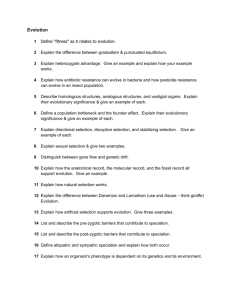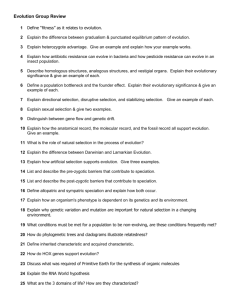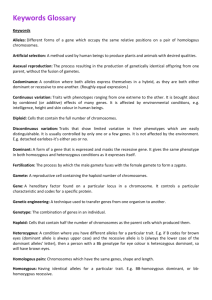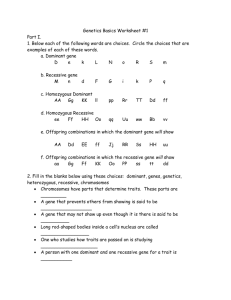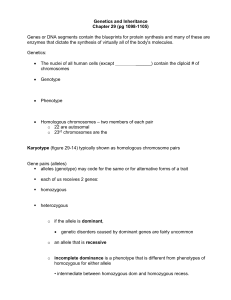Intro to genetics
advertisement
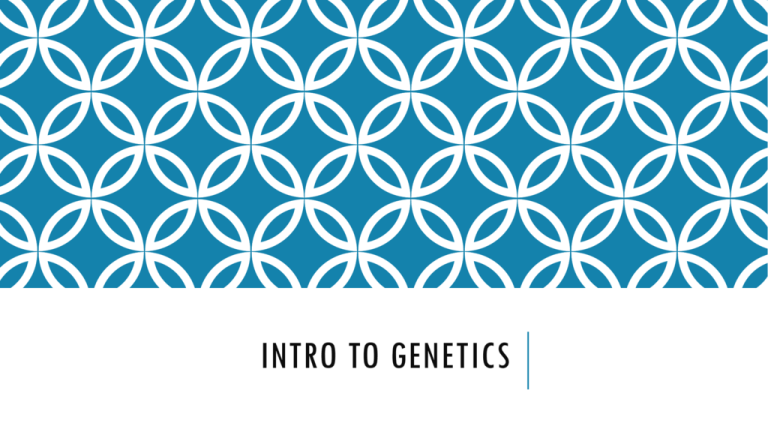
INTRO TO GENETICS Your DNA is organized into chromosomes. There are 46 chromosomes in each cell of your body. You get one chromosome of each pair from your father, and one of each pair from your mother. Because you have two of each chromosome in your body cells, they are known as diploid cells (2n) In meiosis, you create sex cells, also known as gametes (sperm in men and eggs in women). These cells only contain one of each pair of chromosomes in them and are known as haploid cells (n). When a haploid sperm fertilizes a haploid egg, it creates a diploid cell (the zygote), the first of a new person. This cell will divide trillions of times through mitosis to create a person. Your chromosomes can be divided into genes. You have 46 chromosomes but more than 30,000 genes. Let’s say the gene for whether you have brown eyes or blue eyes is on chromosome 12, for example. This means that you have two of this gene- one on the chromosome 12 you received from your mother and one on the chromosome 12 you received from your father. The different forms of a gene- brown eyes or blue eyes, for example- are called alleles. The genes on the chromosomes could be the same (both brown or both blue, for example), which is called homozygous, or they could be different (one brown and one blue, for example), which is called heterozygous. In basic genetics, one allele is dominant over the other, which is referred to as recessive, although this isn’t always the case. For example, let’s say the gene for brown eyes is dominant over the gene for blue eyes, which is recessive. What this means is that the only way a person could have blue eyes, the recessive trait, is if they have two blue eyes genes, one on each chromosome number 12. If a person had one brown eyes gene and one blue eyes gene, the person would have brown eyes, because brown eyes is dominant. Let’s use a different example. Let’s say that we are looking at the genes on pea plants for whether the peas are green or yellow. We know that green color gene is dominant, so we will symbolize it with a capital G. Thus, yellow color would be recessive, so we will symbolize it with a lower-case g. The word genotype refers to the genetic makeup for a particular trait: GG, for example. GG The word phenotype refers to the physical appearance of a particular trait: Green peas, for example. So, the pea plant can be one of three things: Genotype Symbolized Phenotype as… Homozygous Dominant Heterozygous GG Green peas Gg Green peas (because green is dominant) Homozygous recessive gg Yellow peas (because no dominant allele is present) It is possible to tell the probability of different traits of two organisms who have children by performing a Punnett Square (also called a monohybrid cross), in which all of the possible gametes a parent could make are crossed with all of the possible gametes a second parent could make. - The gametes of a homozygous dominant plant would all have the gene for green peas (G). - Half of the gametes of a heterozygous plant would have the gene for green peas (G) and half would have the gene for yellow peas (g). - The gametes of a homozygous recessive plant would all have the gene for yellow peas (g).




